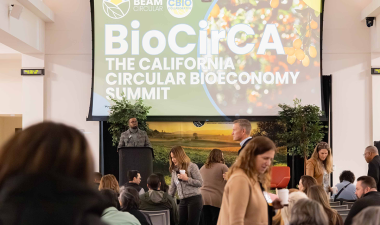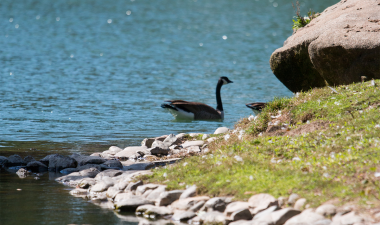Sometimes the best way to learn is to get your hands dirty. That’s true for some agriculture students at Stanislaus State enrolled in classes using the raised beds in the campus’ Sustainable Garden.
Ag majors are spending time in the garden experimenting with various methods. Each group has a separate section, and during the past semester grew fall crops including cabbage, broccoli, chard, beets and red lettuce.
“The gardens work as a way to practice small-scale ag,” said Stan State alumni Hector Vera (’17), who was hired to run the garden in January 2023.
Vera earned a Bachelor of Science in Biological Sciences, concentrating in micro and molecular biology, and became a Master Gardener. He’s now putting the skills to use on campus after creating a large home garden and volunteering at the Turlock Community Gardens. He said when he attended Stan State, he mostly worked in labs, but he sees the gardens are a great way for students to get hands-on experience.
Students are given a 12-foot by 13-foot box to work and are allowed to pick a different vegetable and employ various growing methods. The students decide how to weed their gardens. For example, one group in the fall used wood chips to cut back on weeds.
Fall 2023 was the second semester the course Introduction to Agriculture was taught with garden projects by Stan State Assistant Professor of Agricultural Education, Sofía Brizuela Obando. She assigned each student an individual plot to work.
Vera visited the classes to share his gardening expertise with the students.
“I am learning a lot from the ag professors here that I have been talking to, so it has been really nice,” Vera said.
The students had time to work in the garden on their projects and filed weekly reports during the eight weeks of the project. The students then shared their work in presentations, including photos.
The crops grown in the garden were sold to the food service provider at Stan State, Chartwells. Chartwells has a washing station for the produce, which is something Obando and Vera hope can be added to the Sustainable Garden.
“A washing station will allow for donations to the food pantry on campus, and we can sell the produce right here, which will bring in money for the garden and students in the ag program,” Vera said.
Vera said in the past a program existed that allowed people to pay a monthly fee for a box of produce, and that is something he wants to bring back.
“I would like to see more planted here so there is consistent produce,” Vera said.
Obando’s vision includes expanding the footprint of the Sustainable Garden and engaging more students with experiential practices.
The ag program is growing, she said, with 44 new students entering the program in the fall. Students have a more hands-on learning approach with projects like this.
“I am here for the students,” Obando said. “I want this program to grow as much as it can, because it needs to be at the level that is equal to the San Joaquin Valley, which produces most of the produce for the country. We live here where so much food is grown, but a lot of families remain malnourished, so we want to help.”




